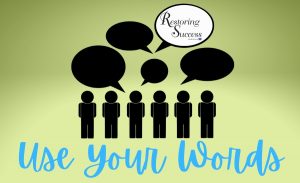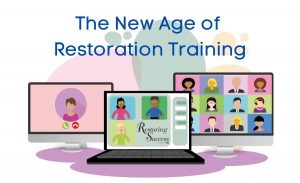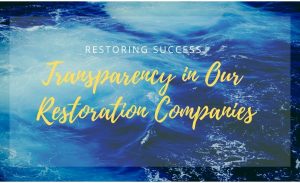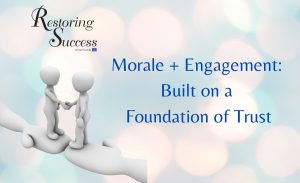 It has been more than 20 years since my husband and I started our full-service restoration company. Today, I have the privilege to meet and share tips with others who are starting up. The most common request? Lists for things such as contracts, equipment, procedures, any list to give a roadmap to success.
It has been more than 20 years since my husband and I started our full-service restoration company. Today, I have the privilege to meet and share tips with others who are starting up. The most common request? Lists for things such as contracts, equipment, procedures, any list to give a roadmap to success.
My husband and business partner dug out our original start-up to-do list from his files as we celebrated our 20-year company anniversary and it is now framed in the hallway. As we reviewed the list, we laughed at the simplicity of the handwritten document that included polo shirts, which is obviously of the utmost importance (ha-ha). Is it that simple?
Our company colors, green and gold, were less strategic and more out of a desire to reflect what is now known as Shared Value #10: We pride ourselves on our presentation and professionalism as a company. We had no money but wanted branded vehicles, but guess what? We already had a gold pickup truck and a green minivan! Voila – our company colors were born! No need to spend money on painting vehicles.
Armed with a vision, yellow legal pads filled with notes and ideas, a toddler, a baby on the way, and no income stream, we borrowed money, cashed in an $8,000 retirement account, and got started.
Today, the fleet of over 70 vehicles is gold with green lettering. We love our careers; the opportunities we have had to grow personally and professionally, the gratification of having served thousands, and the people we have the opportunity to work alongside of in our award-winning full-service restoration company.
My husband will reflect on the momentum of our company’s launch and sum it up very simply, “Failure was not an option.”
Twenty years later, here are our tips for starting up…
The Short List
There are many pathways that will lead your startup to Restoring Success. Your startup’s success is how you define it and there is not a right or a wrong. Embrace your vision and get moving. Here are some things to consider as you begin:
- Why and Drive: Every business has a profit motive and building a financially strong company is a priority; however, restoration is about something bigger and it is important that there is a purpose, vision, and motivation that goes beyond profit. It is like many other businesses where you can easily lose money and will face all types of challenges. Many view restoration as a “recession-proof” industry without vulnerabilities. It is not.
- Stay in touch with “why” you want to start a restoration company.
- Drive for your success. An unwavering focus and drive to your goals will be an important fuel to power your launch.
- Pros-Cons-Challenges: Our youngest son, who wants to be a restorer when he grows up, summed it up and explains his motivation. You can also pick up some tips on the moisture meters you will need for your start-up: A Restorer, Hero in our Community
- Leverage your Assets: Assets may include but are not limited to: soft skills, technical skills, facilities, equipment, and relationships. In general, utilize your strengths and develop your weaknesses and/or surround yourself with individuals that complement your skills and soft spots.
- Experience and Expertise: You may have experiences and knowledge from other jobs, businesses, education, and childhood you will be able to bring to your company. Form a foundation and make your company special and unique. I was an accountant who grew up with a father who was an insurance underwriter. My husband was a claims adjuster who grew up strapped to a roof by the age of 10 and helping his dad build cars. Regardless of your background before entering the industry, embrace your talents and know-how in your new company. Do not dismiss anything as irrelevant. One of my many favorite things about restoration is that it is somewhat of a melting pot of diverse individuals with unique backgrounds that bring expertise and apply it to their restoration career. The individuals and companies are special and can find foundations of success in their uniqueness.
- Relationships: Leveraging your existing relationships will help you start your company. A marketing strategy is sound and important, but do not discount existing relationships. It may be customers of an existing business or friends and family. Consider your existing contacts and leverage them when building your business based on trust and long-term relationships.
- Guidance and Information: Today, there are many options and resources that can help you get a solid start in your new company. Evaluate your needs and seek out the best fits for you to help you get started. Be honest about your strengths and weaknesses and draw on others who can add value. Remember, there is no right vs. wrong. There are many paths to success and different approaches to the business. Find what feels right and make it your own. Keep an open mind and learn different perspectives and approaches. When you can learn from the mistakes and successes of others, take it.
- Franchise
- Consultants
- Training and resources
- Software systems
- Mentors and industry friends
- Be Resourceful and Have Resources: You will not have everything and everyone you need out of the gate. Actually, that may never happen in restoration. Be prepared to think out of the box and prepare resources. Today, we have a beautiful textile restoration department with commercial and specialty equipment. When we started 20 years ago, my husband went to the laundromat and worked through the night.
- Examples include but are not limited to: subcontractors, suppliers, rental companies, banks
- Be prepared to solve problems along the way. Ask for help and use your drive to make things happen. In the early days, your ability to respond and deliver quality results will help propel your new company. I vaguely remember our first commercial loss in the early days. I do not remember the logistics; somehow, we assembled a large team, worked through the weekend, and had them open by Monday. I do remember feverishly scrubbing a special chair and thinking, “I want them to say, WOW when they walk in on Monday.”
- Reinvest: When planning, and upon starting your new business, plan to continually reinvest. If your vision includes growing beyond your initial startup, you will need to invest in people, facilities, equipment, and systems.
Enjoy the journey and excitement. May starting a restoration company bring you much Restoring Success.
https://www.randrmagonline.com/articles/89197-tips-for-restoration-startups
 As children are learning to speak and communicate, we often say, “use your words.” An important soft skill that, as adults and restoration professionals, we should never stop developing in ourselves and others. The following excerpt is a brief description from childcare.net as to the importance of developing this skill:
As children are learning to speak and communicate, we often say, “use your words.” An important soft skill that, as adults and restoration professionals, we should never stop developing in ourselves and others. The following excerpt is a brief description from childcare.net as to the importance of developing this skill:









